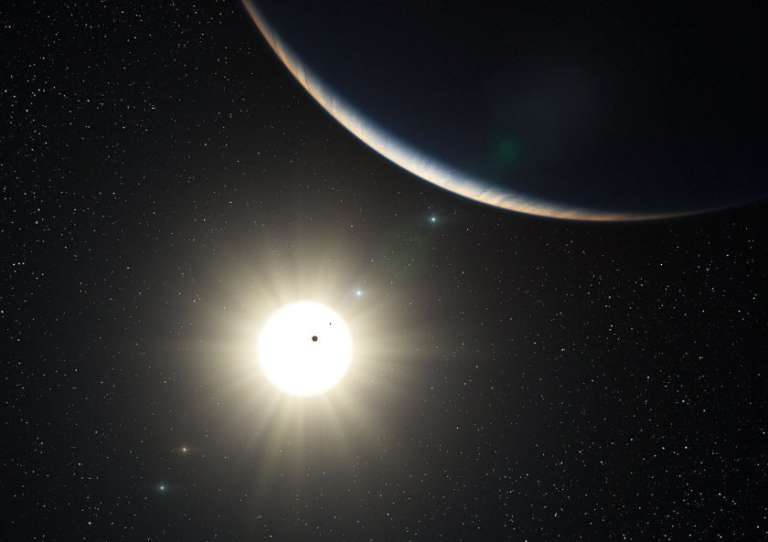Emily Lakdawalla • Apr 06, 2012
A possible nine-planet system
Someone on Twitter pointed me to a paper recently posted to ArXiv titled "Evidence for 9 planets in the HD 10180 system." (PDF) If the (tentative) conclusion holds up, HD 10180 will be the first exoplanetary system known to have more planets than our own.

HD 10180 made headlines in August 2010 with the publication of an article suggesting that it had six, possibly seven, planets. That work was based on analysis performed by Christophe Lovis on measurements of the radial velocity of the star using the High Accuracy Radial Velocity Planet Searcher (HARPS) mounted on the ESO 3.6-meter telescope at La Silla, Chile.
This new paper, by Mikko Tuomi, is a re-analysis of the same data using different statistical methods. His work verified that of Lovis -- and suggests that there are two more, previously unsuspected planets among the crowd. Maybe, possibly. Putting the planets in to his models improves the fit of the rest of the known planets to the observations.
So: if this system is for real, what does it look like? Well, it could hardly be more different from our own solar system. Our planets are neatly organized into four terrestrials in moderately close orbits, followed by four big gassy planets in fairly evenly spaced, more distant orbits. This stellar system is a tight jumble of different-sized, mostly very hot worlds. Six of HD 10180's planets (including Lovis's less-certain one and both of Tuomi's possible ones) are in super-close orbits, closer to their star than Mercury is to ours, and a seventh is just outside Mercury's distance. But these aren't small planets. The two smallest are Earth-ish in size, likely a bit bigger (though the uncertainty is wide and one of them could be as small as Mars); and there's a super-Earth and four Neptune-ish ones in there too, all orbiting in a tight mess. (Their order is: Earth, Neptune, Earth, Neptune, Neptune, super-Earth, Neptune.) Beyond that, the spacing increases; there's another Neptune at 1.5 AU and a Saturn-ish one at 3.5 AU.
And who knows? There could be more beyond that. The Saturn-ish one has an orbital period of 2200 days. Any further-out planets would have much longer orbits and wouldn't have moved very much since HARPS first started observing them, so would be hard to detect with the radial velocity method.Here's the orbits and sizes of the possibly nine planets in the system. The least well-constrained value is the mass of the planets, so I'm listing that as a range. For context, Mars' mass is 0.1 Earth's; Neptune's is 17 times it; and Saturn's is 95 times Earth's. HD 10180 b, i, and j are the less-certain ones.
| Period (days) | Distance from star (AU) | Possible mass range (Earth masses) | |
|---|---|---|---|
| b | 1.18 | 0.0222 | 0.5-2.1 |
| c | 5.76 | 0.0641 | 11.2-15 |
| i | 9.66 | 0.0904 | 0.1-3.5 |
| d | 16.4 | 0.1284 | 9.9-14.2 |
| e | 49.8 | 0.27 | 21.1-28.9 |
| j | 67.6 | 0.330 | 1.9-8.2 |
| f | 122.9 | 0.494 | 18.6-27.9 |
| g | 596 | 1.415 | 13.3-30.8 |
| h | 2300 | 3.49 | 53-79 |
Many thanks to Meg Schwamb for answers to some questions I had!
Support our core enterprises
Your support powers our mission to explore worlds, find life, and defend Earth. You make all the difference when you make a gift. Give today!
Donate

 Explore Worlds
Explore Worlds Find Life
Find Life Defend Earth
Defend Earth

